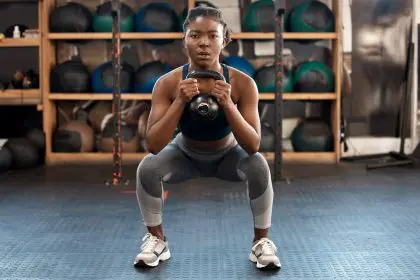Resistance bands are a powerful tool often associated with physical therapy and rehabilitation. However, their versatility makes them an invaluable addition to any fitness regimen. Whether you’re a beginner or an experienced athlete, resistance bands can help you build strength, improve mobility, and enhance your workouts without the need for bulky, expensive equipment. In this ultimate guide, we’ll explore the numerous benefits of resistance bands, how to use them effectively, and the best types to incorporate into your fitness routine.
Why choose resistance bands?
Resistance bands are compact, lightweight, and easy to use, making them ideal for home workouts, gym sessions, or even travel. According to Corrine Carnation, a certified personal trainer, resistance bands can intensify your workouts by either providing resistance or assistance depending on your needs. Resistance bands are suitable for all fitness levels, and they provide a range of benefits:
- Build strength: Resistance bands are perfect for targeting specific muscle groups and building strength.
- Improve mobility: Resistance bands are excellent for enhancing joint mobility and flexibility.
- Increase workout intensity: Bands can take basic bodyweight exercises like squats and lunges to the next level by adding resistance.
What are resistance bands used for?
Resistance bands can be utilized in several ways to boost your fitness routine:
- Warm-ups: Bands are great for activating muscles before a workout, helping you warm up effectively and reduce the risk of injury.
- Strength training: You can use bands to intensify traditional exercises such as squats, deadlifts, and rows, targeting multiple muscle groups at once.
- Mobility work: Bands are fantastic tools for improving flexibility and joint mobility, which are key for overall fitness and injury prevention.
- Rehabilitation: Due to their controlled and adjustable resistance, resistance bands are ideal for recovery and injury prevention. They can provide a low-impact alternative to traditional weights during rehabilitation exercises.
Types of resistance bands
There are various types of resistance bands, each designed for specific exercises and workout needs:
1. Mini loop bands
These small, circular bands are great for lower-body exercises like glute bridges, lateral band walks, and squat variations. Mini loop bands are perfect for targeting smaller muscles in the glutes, hips, and thighs.
2. Long loop bands
Long loop bands are versatile and ideal for full-body exercises. These bands can be used for squats, rows, assisted pull-ups, and overhead presses. They provide more resistance than mini loop bands, making them suitable for both beginners and advanced users.
3. Fabric loop bands
Fabric loop bands are thicker and more durable, making them comfortable for lower-body exercises. They offer consistent tension, and because of their sturdy construction, they are less likely to roll up during use. These bands are great for exercises targeting the legs and glutes.
4. Bands with handles
Bands with ergonomic handles are designed for upper-body exercises like bicep curls, chest presses, and shoulder exercises. The handles make them easier to grip and hold, providing a more comfortable workout experience.
5. Long (non-looped) bands
These flat, non-looped bands are commonly used in physical therapy. They offer customizable resistance and can be used for stretching, rehabilitation, or working smaller muscle groups. Long bands can be cut into shorter lengths to fit specific needs and exercises.
Choosing the right band tension
When selecting a resistance band, it’s crucial to choose the right level of tension. Start with a lighter band if you’re a beginner to master your form and build a foundation of strength. If you can easily complete more than 15 repetitions, consider moving to a heavier band. If you’re struggling to complete even five repetitions, opt for a lighter band. The key is to challenge your muscles without compromising form.
Resistance bands vs. free weights
Both resistance bands and free weights offer unique benefits and can be complementary in a balanced fitness routine:
- Resistance bands: Portable and versatile, resistance bands provide variable resistance that increases as you stretch the band, allowing for more controlled movements. They’re especially beneficial for joint health, making them an excellent choice for beginners or those with joint issues.
- Free weights: Free weights like dumbbells and barbells provide consistent resistance and are excellent for building maximal strength. They allow you to perform more traditional strength exercises like squats, deadlifts, and bench presses.
A balanced workout program might include both resistance bands and free weights to ensure you’re targeting muscles in different ways and avoiding plateaus.
A 30-day resistance band challenge
If you’re ready to incorporate resistance bands into your routine, consider taking on a 30-Day Resistance Band Challenge. This challenge is designed to help you build strength, increase mobility, and develop consistency with short, effective workouts. Each day of the challenge focuses on specific exercises that target different muscle groups, making it perfect for beginners or seasoned athletes.
By the end of the challenge, you’ll have a deeper understanding of how to use resistance bands and how they can improve your overall fitness. The 30-day program offers flexibility, allowing you to adjust the intensity and target different muscle groups as you progress.
Common mistakes to avoid
While resistance bands are user-friendly and beginner-friendly, it’s important to avoid common mistakes to maximize their benefits and reduce the risk of injury:
- Failing to secure the band: Always anchor the band securely to a fixed object or ensure it is properly placed to avoid any slippage during exercises.
- Using the wrong tension: Choosing a band with too light or too heavy a resistance can affect your form. Select a band that challenges you without compromising technique.
- Improper placement: Ensure the band is placed correctly on your body. For example, when using loop bands, ensure they are positioned correctly on your legs or arms to avoid discomfort or injury.
- Neglecting form: Focus on controlled movements and maintaining proper form, rather than rushing through exercises or trying to use too much resistance.
Conclusion
Resistance bands are a versatile and effective fitness tool, offering a variety of benefits for strength, mobility, and rehabilitation. Their portability, ease of use, and adjustable tension make them an excellent choice for anyone looking to enhance their fitness routine without investing in expensive equipment. Whether you’re looking to build muscle, increase flexibility, or recover from an injury, resistance bands can play a key role in helping you achieve your fitness goals. By incorporating these bands into your routine and avoiding common mistakes, you can unlock their full potential and see significant improvements in your overall fitness.
So, what are you waiting for? Grab a resistance band, start training, and take your workouts to the next level!

















